Hinckley released much-sportier version of Trident 660 roadster
It’s not a huge surprise to see this: the new 2024 Triumph Daytona 660 has been teased in a series of ‘spy’ shots in recent months, and it makes a lot of sense from a manufacturer’s point of view.
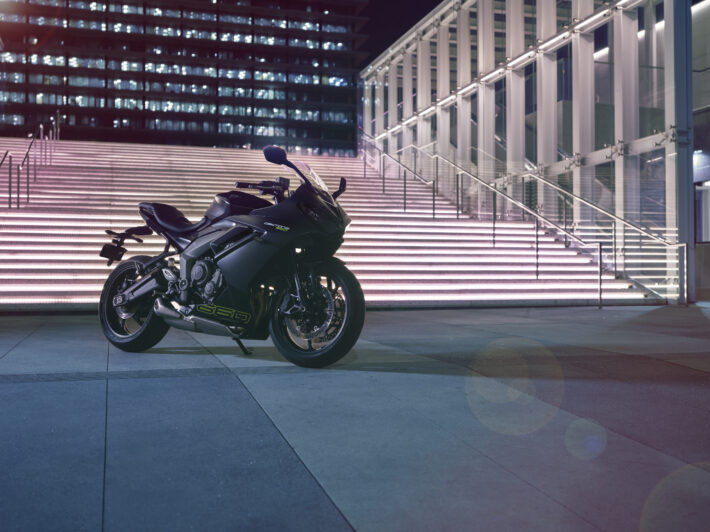
Using the well-established 660 triple engine and basic chassis from the Trident and Tiger Sport 660 models in a fully-faired road-sports model, to take on the likes of the Yamaha R7, Aprilia RS660, Suzuki GSX-8R, Kawasaki Ninja 650 and Honda CBR650R seems like a no-brainer.
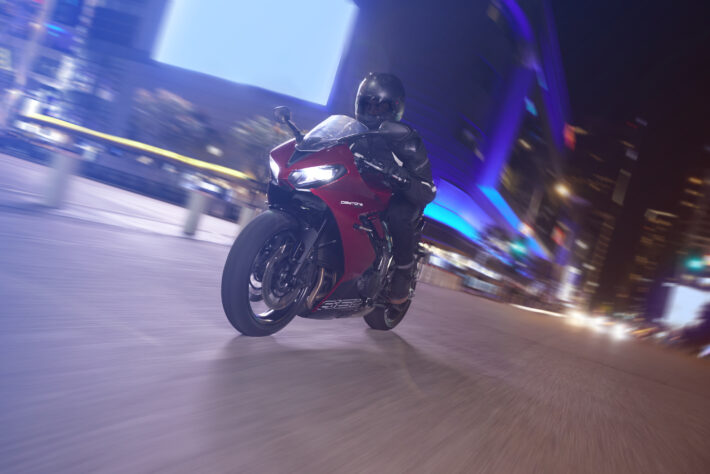
And here it is: the new 2024 Daytona 660. The Hinckley firm has made some fairly serious updates to the basic 660 package, boosting engine power by almost 20 per cent, while keeping the costs down and sticking to that mid-sized sporty road bike formula.
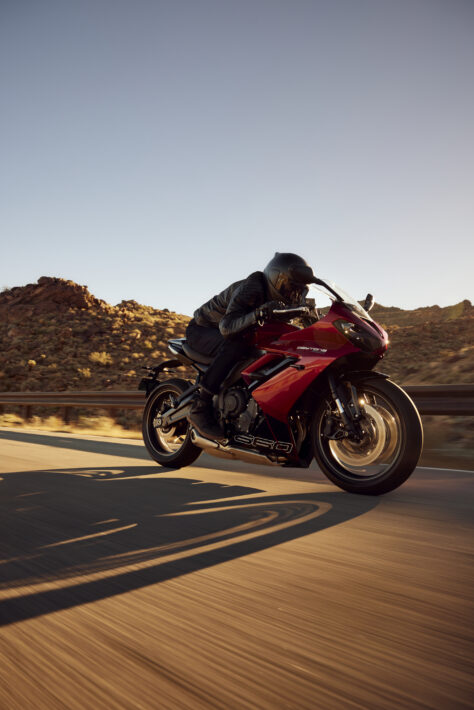
The engine stays as a 660cc inline-triple 12-valve DOHC unit, but now makes a very decent 95bhp at 11,250rpm. Now, we know that’s not a lot compared with historical 600s: the old 675 Daytona made nearer 130bhp.
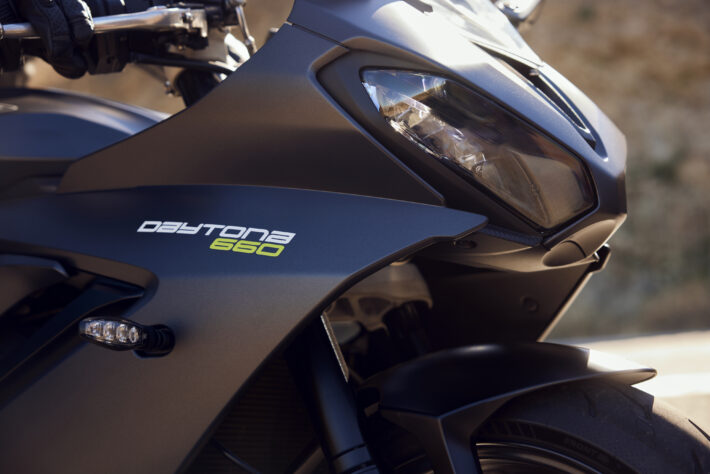
But Triumph wanted to keep peak power down to make the 660 A2-licence compatible with just a simple restrictor kit, so has stuck to that maximum legal output.
What it should mean is that the always-grunty Triumph triple character will be even stronger: tuning an engine for a lower peak figure generally means a more satisfying, character-packed midrange and low-down power.
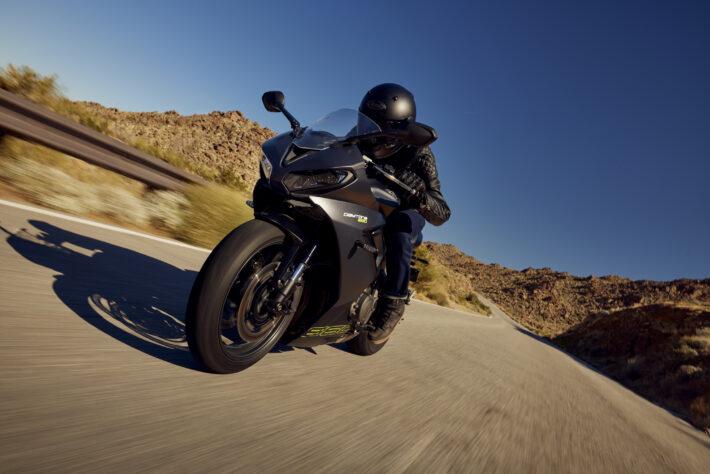
The changes to get the power up to 95bhp from the 80bhp of the Trident are pretty extensive, especially around the top end.
The main modification is replacing the single throttle body fuel injection of the Trident with three individual 44mm throttle bodies for the Daytona, along with revised intake ports, bigger valves, a new cylinder head and new pistons with a low-friction coating and a bit more compression.
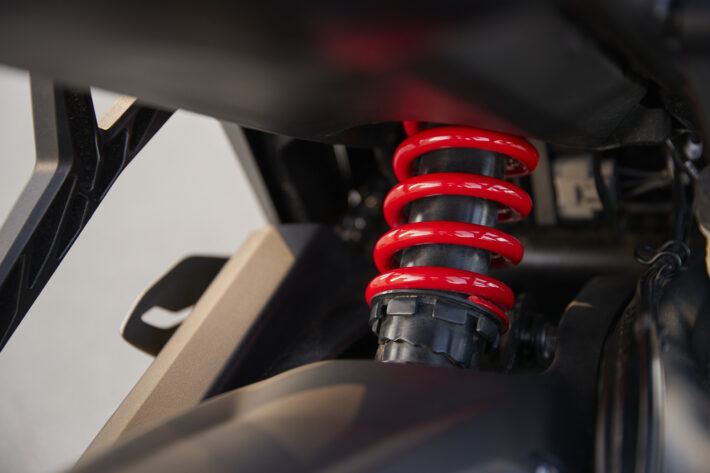
The result is similar peak power to the 94bhp Honda CBR650R inline-four engine, and a little less than the 99bhp Aprilia RS660 twin, but a good bit more than the Japanese twins from Suzuki, Yamaha and Kawasaki.
Like the engine, the steel tube perimeter frame is based on the same basic design as the Trident, but with the changes needed to sharpen up the handling.
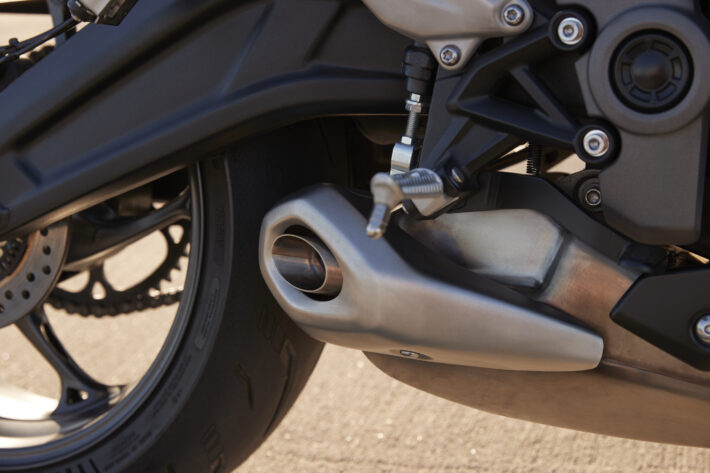
There’s a steeper head angle, and the rear suspension sits higher, together with a more forward-biased riding position, all of which makes for a more agile, sportier setup than the naked roadster.
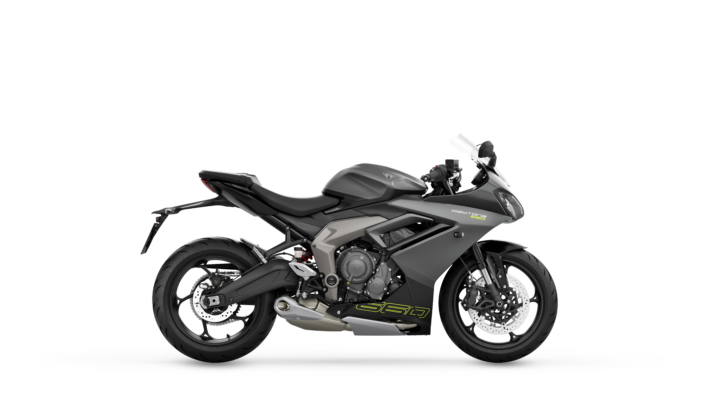
The suspension only has preload adjustment on the rear monoshock, but Triumph’s fitted decent quality Showa parts: 41mm SFF-BPF big piston USD front forks and a rear monoshock operated by a steel swingarm.
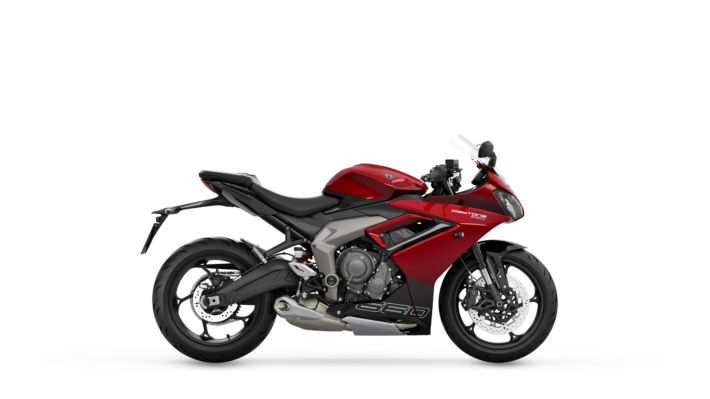
Brakes are Triumph branded, with dual 310mm discs and four-piston radial mount caliper up front, and the cast aluminium wheels wear sporty Michelin Power 6 rubber in proper sportsbike sizes: 120/70 17 front and 180/55 17 rear.
In terms of electronics, the 660 comes with a fairly standard mid-range setup for 2024. You get a simple rider aids package with three modes: Sport, Road and Rain, ABS, and switchable traction control.
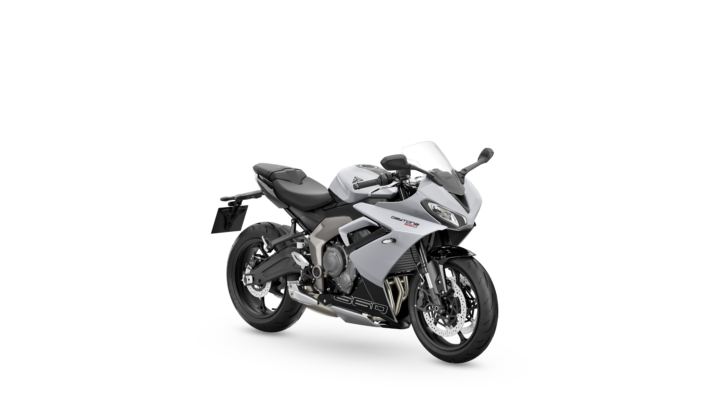
There’s a neat colour LCD dash, with optional Triumph Connectivity Bluetooth setup and lighting is all-LED. Design-wise, the new bike looks good, with some premium touches like the embossed fuel cap and a neat top yoke design.
It comes in three colourways: white, black or red, and there’s a load of official accessories already available from Triumph, including luggage, seat lowering kit, quickshifter, crash protectors, mini indicators and more.
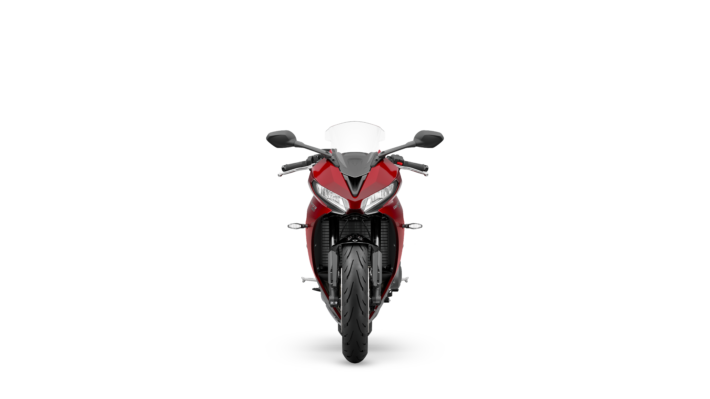
Finally, Triumph says the new bike will be cheaper to run than ever, thanks to huge 10,000 mile service intervals and a two-year unlimited miles warranty – nice.
The price for all this? A very reasonable £8595, and the new Daytona 660 will be in shops in April. More info: www.triumphmotorcycles.co.uk
2024 Triumph Daytona 660 SPECIFICATIONS
ENGINE
Type Liquid cooled, inline 3-cylinder,12 valve, DOHC, 240° Firing order
Capacity 660cc
Bore 74.04mm
Stroke 51.1mm
Compression 12.05:1
Maximum Power 70 kW (95PS) at 11,250 rpm
Maximum Torque 69 Nm @ 8,250 rpm
Fuel System Multipoint sequential electronic fuel injection with electronic throttle control
Exhaust Stainless steel 3 into 1 header system with low single sided stainless steel silencer
Final Drive X-ring chain
Clutch Wet, multi-plate, slip & assist
Gearbox 6 speed
CHASSIS
Frame Tubular steel perimeter frame
Swingarm Twin-sided, fabricated steel
Front Wheel Cast aluminium alloy 5 spoke, 17 x 3.5 in
Rear Wheel Cast aluminium alloy 5 spoke, 17 x 5.5 in
Front Tyre 120/70 ZR 17
Rear Tyre 180/55 ZR 17
Front Suspension Showa 41mm upside down separate function big piston (SFF-BP) forks, 110mm wheel travel
Rear Suspension Showa monoshock RSU, with preload adjustment, 130mm wheel travel
Front Brakes Twin 310mm floating discs, 4 piston radial callipers, ABS
Rear Brakes Single 220mm fixed disc, single piston sliding calliper, ABS
Instruments Multi-function instruments with colour TFT screen
DIMENSIONS & WEIGHTS
Seat Height 810mm
Wheelbase 1425.6mm
Rake/trail 23.8°/82.3mm
Wet weight 201kg (with 90% fuel)
Fuel Tank Capacity 14 litres
Fuel Consumption 57.6 mpg (4.9litres / 100 km)
CO2 Figures 113 g/km
Emissions Standard EURO 5+
Service interval 10,000 miles (16,000 km) /12 months, whichever comes first